I don’t know about you, but the last few weeks (months?) have felt surreal. Not only on a professional level, but on a personal one as well. That uncanny feeling I have about ‘these times’ has continued as our local and state leaders and our federal governments are discussing what it will take to start moving toward normal (or, at least, a new normal).
What does the future hold for higher education? We’ve been discussing “What’s Next” in our posts here on Frontiers. Today we are joined by two estimable leaders in our field, Jory Hadsell and Pat James, to discuss California Community College’s responses to the COVID-19 crisis, and how the foundation of the state’s system helped ensure their response was as successful as possible. In addition, Jory and Pat offer some advice on instructional continuity and crisis planning.
They have included some amazing tips and suggestions in today’s post. We italicized these tips to call attention to them.
Enjoy the read and stay healthy!
Lindsey Downs, WCET
As we all move toward summer and wonder what the future holds for our normal progress of scheduling classes and serving students, are we taking the time to consider not only the next steps but next coordinated movements? This post, written jointly by the former and current executive directors of the California Virtual Campus – Online Education Initiative (OEI), who are also WCET contributors, will share how the foundations had already been built for its state system of 115 community colleges at the time of the crisis. We will focus primarily on three areas:
- Research
- Professional Development
- Permanent Planning
We will highlight how a few individual colleges approached the challenges, the widespread sharing that exists across the system, and some ideas for collectively moving forward through summer, fall, and beyond. We hope to stimulate some ideas about what you can do now to influence the future success of your students and to plan for tomorrow’s emergency.
California Community Colleges Response to COVID-19
On March 30, the Public Policy Institute of California posted the following on their blog:
California’s community colleges can offer others a lesson in effective practices for distance education. These schools have been at the forefront of remote learning for more than four decades, from correspondence courses in the early days to instructional television and video cassettes in the 1980s. In the early 2000s, community colleges began to offer internet-based online courses.
The availability and popularity of distance courses have exploded with the internet, as have course success rates. The share of enrolled students completing and passing a course has skyrocketed, narrowing the gap in success between online and in-person courses substantially…
…Policies around closing the success gap were intentional, with the Community College Chancellor’s Office leading efforts to improve online courses through the Online Education Initiative and the California Virtual Campus. Resources available to administrators and faculty include modules on effective course design, remote tutoring, student services, and even proctoring of exams (links take you to the CVC-OEI ecosystem portal).
All 72 independent Community College Districts started transitioning their on-campus classes in mid-March and were all shifted to remote learning by April 6th. They took from 2 days to 3 weeks (3 including spring break) to resume with almost all of their face-to-face classes converted to a distance format.
A couple of days ago, one of the distance education coordinators asked us to “imagine what it would have been like now without a common LMS and shared ecosystem of resources.” The sharing of resources and ideas across our system in the last month has been phenomenal and we will share links to resources throughout and at the end of this article. We wanted to quickly reflect on what made the current mobilization possible.
Background
At the beginning of the OEI, we were a small team of under ten people, and we decided to be wholly collaborative in our planning and decision-making. In creating something new, we were all fortunate to have come from working in colleges and charting a new course. We had to learn to approach this work differently. We started by not separating ourselves into the traditional college “divisions” for decision-making and resourcing. Instead, all ideas were brought to the table, assessed, and prioritized with the big picture in mind. One of the first things we did as a team was to watch a TED Talks episode delivered by Linda Hill entitled, “How to Manage for Collective Creativity.”
The philosophy of collaboration and full transparency—along with a foundation of doing what is best for students as a guiding principle—allowed us to help colleges coalesce and cooperate in new ways. It set us on the path to shared decision-making from the adoption of a quality course design rubric through the selection of a common learning management system, and the development of an online support ecosystem that all colleges could adopt from a central source (Tip: Enabling colleges to purchase compliantly without going through individual RFP processes turned out to be quite a helpful approach). This system-wide foundation was undeniably the springboard needed as the state recently transitioned courses to remote offerings.
As the initiative developed in that first year, we embraced input from administrators, staff members, and faculty across the system. Two groups that were instrumental in the collaborations were the distance educators’ association (CCCDECO), and the statewide academic senate (ASCCC). We practiced systems thinking when we approached any problem from disparate business processes to local curriculum considerations.
Our advice is to practice systems thinking if you’re looking to transition from the initial reactions to this crisis to quality online education that can be scaled to support a long-term strategy. Engage everyone in the process of researching and discussing online learning, which may have existed as a separate or isolated department of your college before February 2020.
We provided a few excerpts from Peter Senge’s book, “The Fifth Discipline,” on the benefits of systems thinking:
Systems thinking is a … framework for seeing interrelationships rather than things, for seeing patterns of change rather than static “snapshots” (pg 68).
….most of the time, things do not turn out as we expect. But the potential value of unexpected developments is rarely tapped. Instead, when things turn out contrary to our expectations, we go immediately into problem-solving mode and react, or just try harder— without taking the time to see whether this unexpected development is telling us something important about our assumptions (pg 288).
As we move from a temporary situation as an initial reaction to COVID-19 to the possibility of an extended time of campus closures—what will faculty, staff, and administrators in full collaboration be able to learn together?
We offer some ideas about research to inform planning, resources for current and ongoing professional development, and ideas about developing permanent plans for the future.
Don’t Fly Blind: Start Tracking Now, You’ll Need It Later!
As educators, we are always focused on learning both from our own experience and from the experience of others. Ultimately, we should always focus on every opportunity to learn, and this crisis is like every experience, an opportunity to grow in knowledge. Right now, many of us are deep into getting to the next destination without a clear roadmap. Once we have traveled somewhere, we have the knowledge of how we got there, and we can make the road smoother for the next time we have to traverse it.
If we have learned nothing else in California, it is that the fires will not cease and the earthquakes will come again. The massive amount of planning effort that goes on after a devastating event informs the next response, so institutions do not react, but respond based on an informed plan. To develop a strong plan—reviewing the reactionary path you had to take is a critical step.
What are your institutional researchers doing right now to ensure that you will have what you need to inform a plan for both the immediate and long-term future?  Establish whatever baseline data you can now. Don’t wait too long to establish some models for your research efforts or you may have trouble disaggregating the information later.
Establish whatever baseline data you can now. Don’t wait too long to establish some models for your research efforts or you may have trouble disaggregating the information later.
Here are some of our broad suggestions:
- Track your steps carefully from the start of this crisis (event) and ongoing. Include a baseline of what staff you had who were able to do the instructional design and support work, who was involved in the decision-making process, and the logistics of when and how you mobilized a transition from on-campus to online classes. Keep track of how you rolled out your transition and what steps you continued to take over time.
- Monitor and track the questions you are fielding from your help desk or other resource providers (Disabled Students Program, distance education staff, professional development facilitators, etc.). These questions will help you identify any gaps you had in your preparation and rollout efforts. Frequently asked questions are great for letting you know what information you didn’t initially provide and making sure that information is readily available as you move forward.
- Determine “the numbers” (some examples):
- Class adaptation: Assess what existed in your schedule before the transition in all modalities and what was formally included in your online learning program after. Which courses would have been delivered on campus if they could have been? This information may be invaluable in letting you know how to effectively grow your regular online program.
- Faculty: Determine both the number and identity of those who had training prior to the transition, and who received just-in-time training during the event, and what comprised professional development.
- Students: How many students received some kind of orientation prior to, and during the event? Did you lose students during the transition?
- Students: How many of your students have never taken online classes before? This information can help you decide what resources you need to help students succeed (i.e. orientation, technology, and connectivity).
Dr. Jodie Steeley, the distance education director at Fresno City College, told us that at the onset of the on-ground transition at her college, they looked for resources (vendor-based solutions and professional development courses) that had built-in analytics. Their student orientation was created by Instructure and was available for download from the Canvas Commons. They chose a scalable basic student orientation to Canvas course, Passport, which provided two things that Jodie and her small team were seeking—good information for students and accurate analytics. The ability for students to self-enroll in the orientation course also allowed the college to track not only how many, but which students participated in the orientation effort.
The Fresno City College team drew on their experience of having to be incredibly efficient and we can all learn from them. As you create plans in the light of the current events, share your ideas and keep reviewing the ideas of others. The roads we travel may be different. We may be a small university, a medium-sized community college, or a large state university system, but the more we involve ourselves in systems thinking, the more we learn and build an educated citizenry.
What are you doing to ensure that you will have the data you need to plan for your future work? Don’t wait too long to establish some models for your research efforts or you may have trouble disaggregating information later.
Professional Development Changing Phases…
Quick Start PD for an Emergency Online Migration
There are many ideas being published right now about what teachers who are new to offering classes from a distance need to know. In conversations with various college online leaders, we found that they were sharing actual “quick start” courses with each other. The resources they were using were often from Canvas Commons, which are adaptable to any system as they provide the basics on how to use functions of the LMS.
This includes:
- Announcements
- Calendaring
- Syllabi
- Coursework posting and collection (e.g., essays and assignments)
- Quiz and proctoring functionality
- Posting general assignment and information pages
See the resources located in this section of the CVC-OEI resource site. Quick-start efforts also included the use of Zoom. Many of our faculty are meeting their classes synchronously while others are choosing to take a more traditional, asynchronous online course path, and still others are doing both. There are still questions about what the best approach is, and what makes the decision effective is based on the answers to them.
- What training does the instructor enable them to do? Are they adept at the use of web conferencing tools, or are they really comfortable with the available tools and resources of your LMS?
- What is the subject matter of the course? Some courses rely heavily on demonstrations that may not be readily available in a digital format, or they can’t be verified in a completely online environment without comprehensive faculty training and access to the appropriate tools. Welding and firefighting come to mind.
- How much time do faculty members have to prepare?
- How prepared are the students to learn in an asynchronous environment?
Training Format
Some of our colleges started by offering on-ground training for faculty during a gap in the time of the initial closure and the reopening of classes remotely. They also offered a combination of self-paced training opportunities in the LMS and web seminar training using Zoom. The differences in the time-span of the closure and the use of spring break weeks, compared to success rates, will be interesting to analyze in the wake of this crisis.
Ongoing Professional Development and Support
Think in terms of offering professional development in phases. As much as possible, don’t stop the good work of improving the quality of established online classes. Dual tracks are needed to address both ends of the online teaching continuum. It’s time to consider what might be next in providing professional development for faculty. What would help them grow their ability to improve student engagement and effective practice in their remote teaching that could develop into high-quality online courses? Also, what support do your seasoned online instructors need at this time, and is it possible that they could share their course content with the folks just getting into remote teaching? Don’t forget that many online instructors also teach on-ground courses and need time and support to both continue what they were doing, and their remote efforts as well.
Through interviews with a variety of our California distance education coordinators, we developed a shortlist of additional training “segments” that could be released to faculty as they become able to adopt them into their remote practice. These ideas deal with technical training and pedagogical training. We have also seen colleges add social and emotional elements to their training. By the way, the OEI has developed an online wellness center that can be customized for use by the individual colleges.
Beyond the Quick-Start
- Self-paced: Creation of accessible documents. The CVC-OEI has several self-paced training options available via its professional development program @ONE.
- Creating communication opportunities for students:
- What is regular and substantive interaction?
- What makes for an effective discussion?
- Creating opportunities for community building within a class.
- Creating assessments that are aligned with course objectives and outcomes:
- A quick overview of Backward Design strategies or other alignment strategies.
- Sample assessments using an LMS.
- Providing instructor feedback.
- Multiple media presentation activities, including:
- Quick Video Announcements (with captioning resources)
- Create a quick video to introduce themselves for their first effort. We suggest not adding captioning to the first one. This should be low stakes just to get their feet wet.
- Then have them create a 2 minute or less instructional video and add in your captioning resources (e.g., Youtube edited captions or other services you may have retained).
- How to find OER resources.
- Practicing “Copyright” Compliance, including:
- Citations.
- Creative Commons.
- The Teach Act.
- Fair Use policies.
The use of the group tools in your LMS might be another item to add to the list, but you get the idea. Develop these quick additional professional development tools as you can. You likely have already developed content within a certification course for online teachers that you can adapt to short, just-in-time (JIT) solutions. An open course from Modesto Community College has some really great examples of very quick just-in-time videos that will give you an idea of what type of video would work as JIT training. Then develop them into a menu that your faculty can select. As you look at the @ONE website—which includes the courses page and the Pocket PD and Quick Byte pages—you can see how these professional development opportunities have been added over time. Everything developed by @ONE is licensed with Creative Commons, and you can adopt and adapt the courses for your own use.
Other Resources for a Phased Approach
Ongoing Planning
Lastly, we wanted to encourage you to start a planning effort that uses systems thinking principles to create a solid but living plan for the “next time” you are faced with the need for instructional continuity implementation. Whenever you call upon faculty and staff to participate in a planning effort like the one we are encouraging, be certain that they are not so crazy busy that they couldn’t possibly participate at this moment. Yes, make a plan to plan.
Start collecting information as we proposed earlier. Have someone who is an effective planner on your staff develop a list of items you may need in the short term, and ultimately, a permanent plan for instructional continuity. What will it cover? Will it be included in an overall distance education plan? Does it cover the following situations for both short- and long-term periods? What college policies should already be in place?
College closure scenarios to plan for:
- Interruption of online education but not on-campus classes.
- Interruption of on-campus instruction but not online education classes.
- College closure when the college is functional and the community is not—as in the COVID-19 situation and Northern California Fires.
- College closures due to actual facility loss (as in earthquake, fire, floods, etc.).
- Campus shut down due active shooter or another environmental safety issue.
In 2018, the OEI started a disaster plan initiative for “instructional continuity.” Although we didn’t use the term then, when we were faced with college closures due to the Northern California fires.
Last year, we engaged with our partners at American Public University System to develop disaster planning strategies for the colleges that cover a wide range of scenarios. We hope to continue that work via yearly Online Teaching Conference presentations and direct work with APUS’s articulation partner colleges. APUS provides programs for students in disaster planning that are online, and it would benefit all of us to have some staff and students take advantage of those programs! In response to the pandemic, the institution recently launched Momentum 2020. It will enable students, who experienced a disruption in their learning, to continue their education by taking up to two undergraduate courses using a 50 percent tuition grant for each course started in May through August 2020.
Cynthia Dewar from San Francisco City College told us that they started creating an instructional disaster plan back in 2018 and had many of the following steps in place when their college was faced with transitioning their courses. Those actions were instrumental in getting them off to a good start. The items below were meant to happen prior to any emergency need.
- Clear identification of the process.
- Criteria for Emergency Status that allow for an emergency transition to happen.
- The college LMS administrators already can work from anywhere, and can post alert information and instructions, and also deploy surveys.
- Provided with sample surveys to locate faculty, staff, and students that LMS administrators can have ready to go to find out who is available to teach, help, and attend.
- Provided with sample alert messages.
- Provided with timelines, lines of communication, and support resources in advance.
- A plan for having all staff, faculty, and students prepared.
- Everyone has an LMS account. For us, there was no additional LMS cost as our system license is for unlimited use.
- Everyone receives instructions on how to set up their profiles and notifications and where to go to get information in an emergency (i.e., their dashboard).
- For faculty and support staff:
- A clear template for emergency use of the LMS for instruction (could live in every course as an unpublished unit(s)/module(s) ready for use at any time).
- All faculty have access to online tutorials (self-paced) on how to use the template and how to remain in compliance with regulations while doing so. They are required to go through the tutorials preemptively.
- Added in Feb. 2020: Everyone has a Zoom account and instructions for effective use.
The distance education general planning guide we developed back in 2018 also included training for administration about distance education so that there is a common understanding of what it takes to develop a comprehensive DE Program. The disaster planning component additionally included what to do when an instructor became unavailable during a term (due to death, illness, or separation of employment).
Some general suggestions from our coordinators were to create small teams consisting of 1 instructional designer, 1 seasoned online instructor, and 3 to 5 new teachers who are working on their emergency course migrations (ECM). These teams can meet as needed and generally assist the ECM teachers.
Courses that are already completely online can be shared with ECM teachers instructing similar courses, or within disciplines, to provide ideas and content as ECM teachers ramp up through summer and fall. The concept we heard the most was to share everything. If intellectual property rights become an obstacle, address that with funding if you have it, or appeal to the emergency situation our students are in. Always do what is best for students.
We hope you weather this storm well and emerge stronger and better able to respond to events that will come your way in the future. We have an opportunity to apply the lessons we are learning now to strengthen our institutions for years to come. Set your sights on comprehensive disaster planning and don’t leave the instructional component as an afterthought.

Jory Hadsell,
Executive Director of CVC-OEI,
WCET Steering Committee member

Pat James,
Educational Partnerships Manager, American Public University,
former Executive Director of the CVC-OEI,
Former chair of the WCET Executive Council.
Both Jory and Pat were original staff hired to launch the Online Education Initiative in 2014, now the California Virtual Campus – Online Education Initiative.
The CVC-OEI Website provides a link to all of the California Community College resources.
American Public University is a fully online university and has educational partnerships with colleges in the CCC system.
WCET Resources on COVID-19
This is a highly dynamic situation and WCET will continue to update this post as needed. As always, we recommend that you directly contact your accreditor for specific guidance. WCET will continue to provide resources and updates related to COVID-19. Please see the WCET COVID-19 webpage which lists a number of curated resources for instruction, assessment, student services, regulatory policy, technology/infrastructure, and institutional emergency response planning.
__
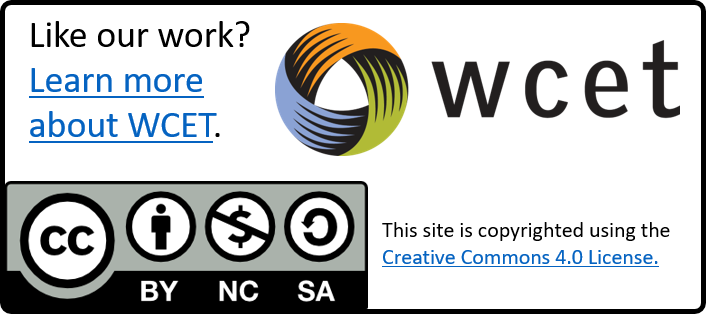
Image Credits:
CA Image by Gordon Johnson from Pixabay
Diagram Photo by Kelly Sikkema on Unsplash
Laptop Photo by Christin Hume on Unsplash
Clock Photo by Tristan Colangelo on Unsplash


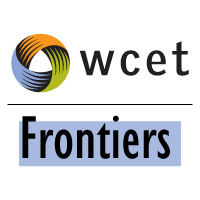


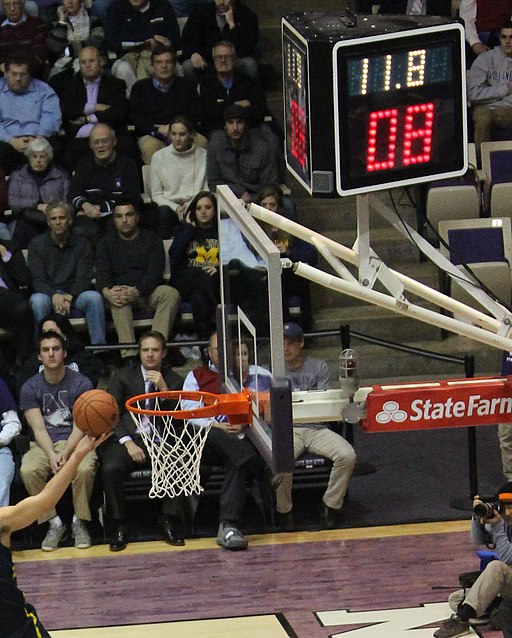




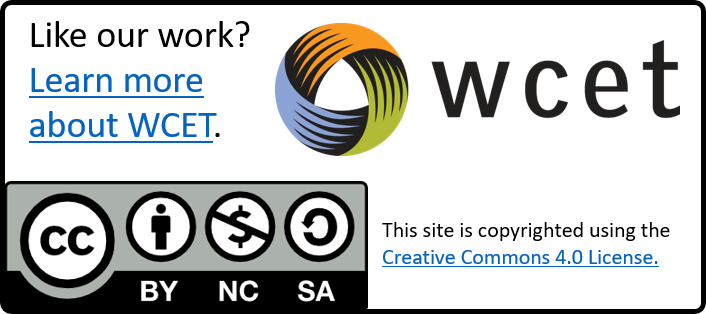


 Since we were recording panels ahead of the virtual event, did it make more sense to hold the event the week of April 13, the same week as the in-person Summit was planned? Or was a better option to record the panels the week that the speakers had already blocked off and would be available, and then release the videos and do the online Summit the following week? Based on our speaker’s availability we ended up doing the panel recordings via Zoom on April 15 and 16 and then running the virtual Summit the following week.
Since we were recording panels ahead of the virtual event, did it make more sense to hold the event the week of April 13, the same week as the in-person Summit was planned? Or was a better option to record the panels the week that the speakers had already blocked off and would be available, and then release the videos and do the online Summit the following week? Based on our speaker’s availability we ended up doing the panel recordings via Zoom on April 15 and 16 and then running the virtual Summit the following week.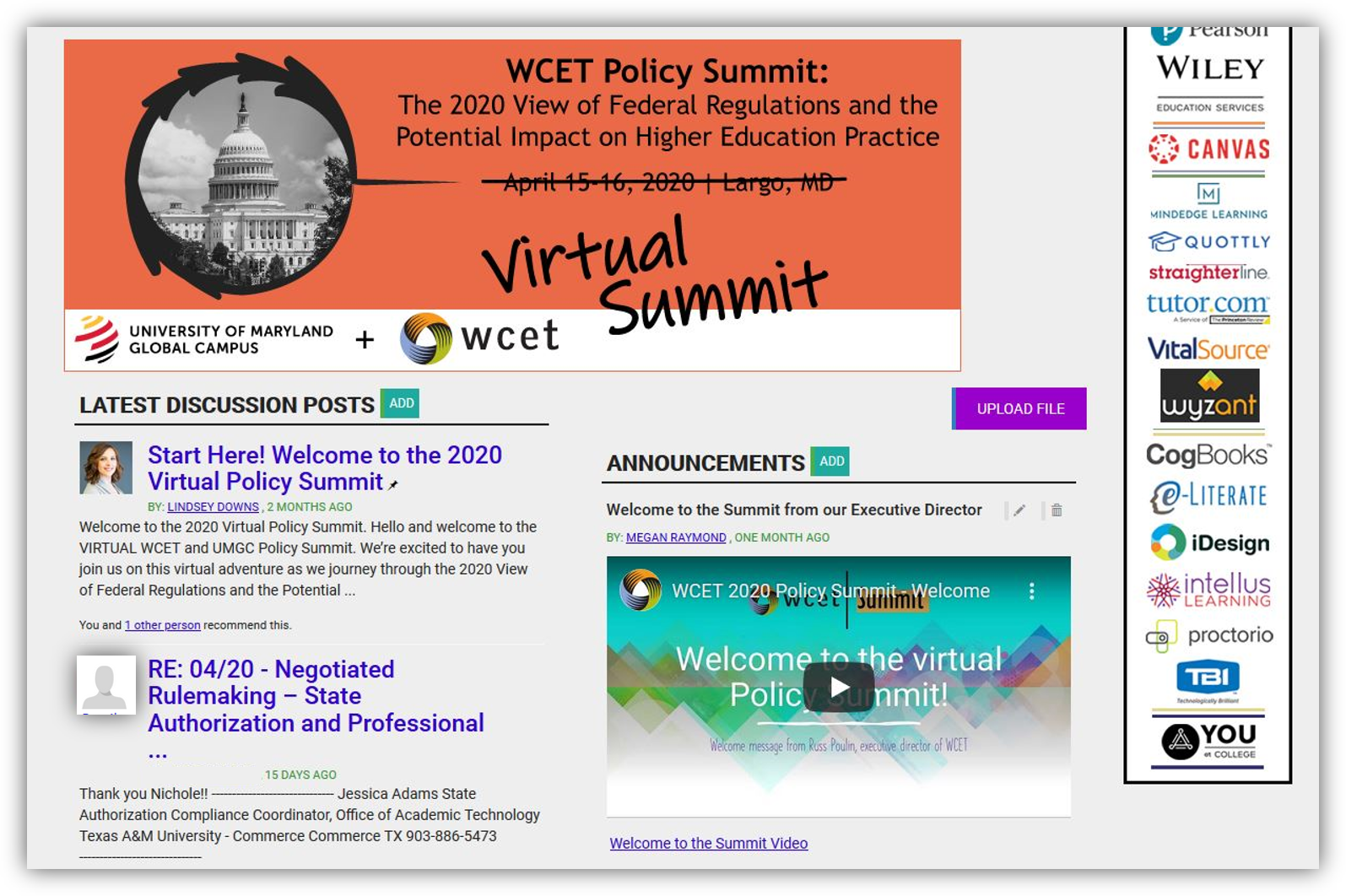
 A few weeks ago, WCET started a series of posts focusing on What’s Next for higher education. So far those posts have been focused on tangible concerns like
A few weeks ago, WCET started a series of posts focusing on What’s Next for higher education. So far those posts have been focused on tangible concerns like  The resulting tension between re-opening businesses and “flattening the curve” aside, there is little evidence that even after states “re-open,” individuals will return to many businesses or even have the income to do so.
The resulting tension between re-opening businesses and “flattening the curve” aside, there is little evidence that even after states “re-open,” individuals will return to many businesses or even have the income to do so.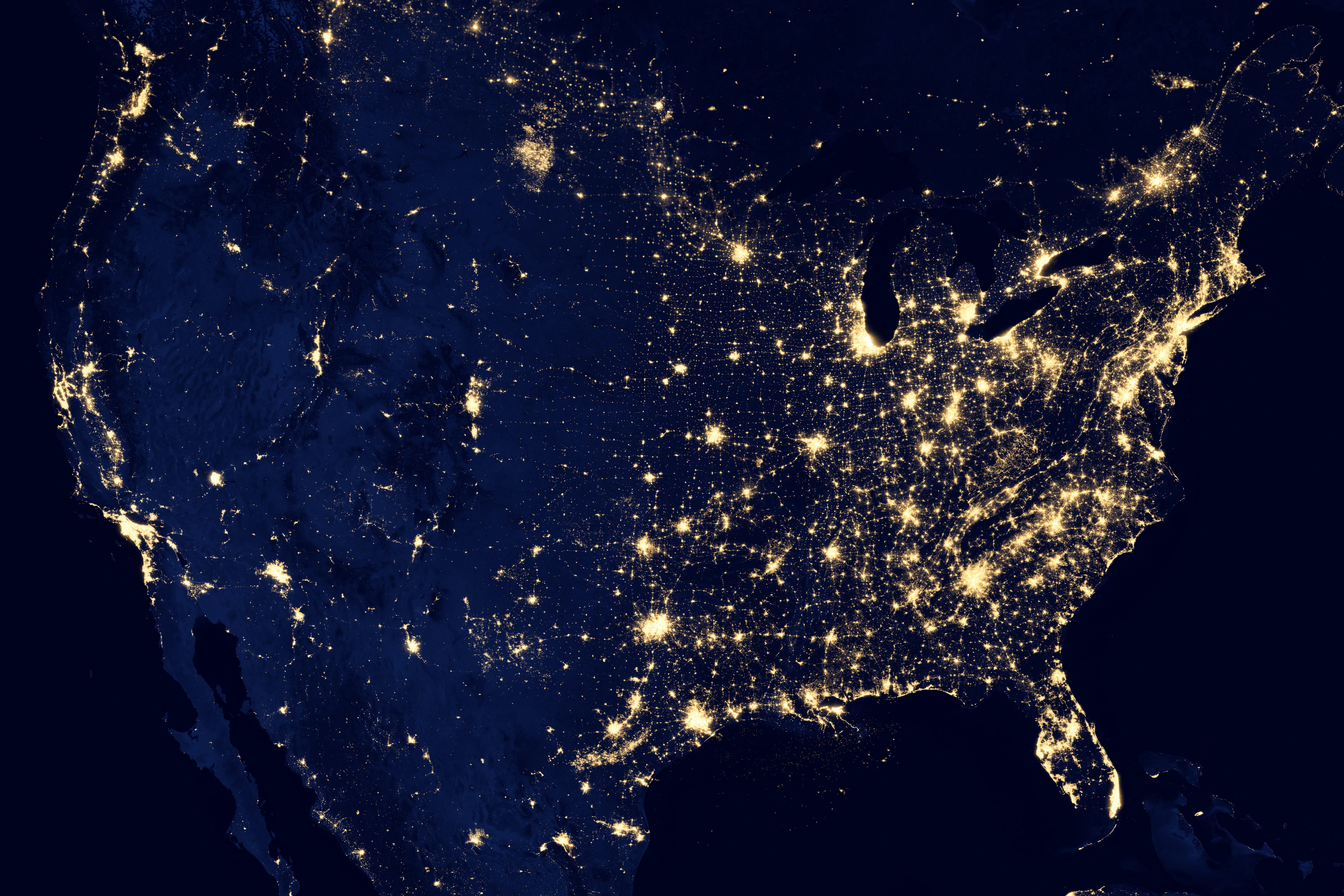
 The pandemic caused some students to leave the state of the institution to continue their courses remotely from a different state. Participation by the student in courses leading to professional licensure in a different state may prompt the need for the institution to gain approval of the program from the state licensing board where the student is located.
The pandemic caused some students to leave the state of the institution to continue their courses remotely from a different state. Participation by the student in courses leading to professional licensure in a different state may prompt the need for the institution to gain approval of the program from the state licensing board where the student is located. The State of Emergency declarations from many states that provided flexibility to employ health care students and workers during the pandemic may also cause students to realize the value of their profession and even to be more discerning when considering the state where they will someday practice their profession. The discriminating student will look for an institution that provides clear information about the status of the curriculum meeting state educational requirements in other states. Disclosures by institutions provide students the ability to make informed decisions and understand whether the program’s educational offerings are sufficient to obtain a license or certificate to secure employment in that profession.
The State of Emergency declarations from many states that provided flexibility to employ health care students and workers during the pandemic may also cause students to realize the value of their profession and even to be more discerning when considering the state where they will someday practice their profession. The discriminating student will look for an institution that provides clear information about the status of the curriculum meeting state educational requirements in other states. Disclosures by institutions provide students the ability to make informed decisions and understand whether the program’s educational offerings are sufficient to obtain a license or certificate to secure employment in that profession.


 In times of crisis, people want accurate and quick information – and with the help of Cowboy Joe, we have been able to provide that information to our community. As things change rapidly during the crisis, we have learned it is imperative to have Cowboy Joe’s knowledge base updated as quickly as possible; since he’s able to respond so rapidly, it’s extra important that he shares the most up-to-date information!
In times of crisis, people want accurate and quick information – and with the help of Cowboy Joe, we have been able to provide that information to our community. As things change rapidly during the crisis, we have learned it is imperative to have Cowboy Joe’s knowledge base updated as quickly as possible; since he’s able to respond so rapidly, it’s extra important that he shares the most up-to-date information!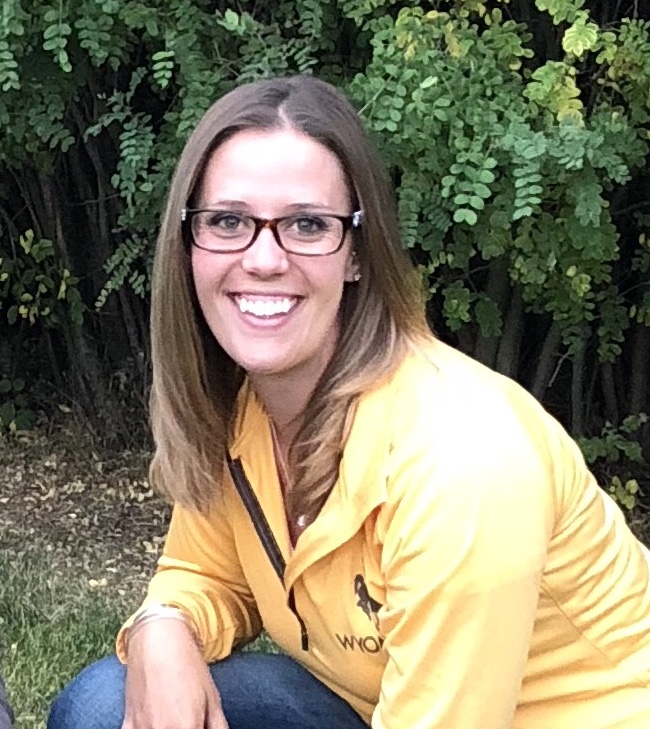


 Perhaps a substantial majority of faculty will have embraced digital learning and appreciate the relationship between professional development, quality standards, and student success. And finally, perhaps students previously hesitant to take online courses will now regard digital learning as convenient and also as a viable pathway to their career goals.
Perhaps a substantial majority of faculty will have embraced digital learning and appreciate the relationship between professional development, quality standards, and student success. And finally, perhaps students previously hesitant to take online courses will now regard digital learning as convenient and also as a viable pathway to their career goals.

 Establish whatever baseline data you can now. Don’t wait too long to establish some models for your research efforts or you may have trouble disaggregating the information later.
Establish whatever baseline data you can now. Don’t wait too long to establish some models for your research efforts or you may have trouble disaggregating the information later.



 And then, the Open Community “opened,” and it wasn’t merely an echo chamber of the usual voices anymore.
And then, the Open Community “opened,” and it wasn’t merely an echo chamber of the usual voices anymore. My hope is that the education community will continue to embrace and expand Open. The Department of Education
My hope is that the education community will continue to embrace and expand Open. The Department of Education 